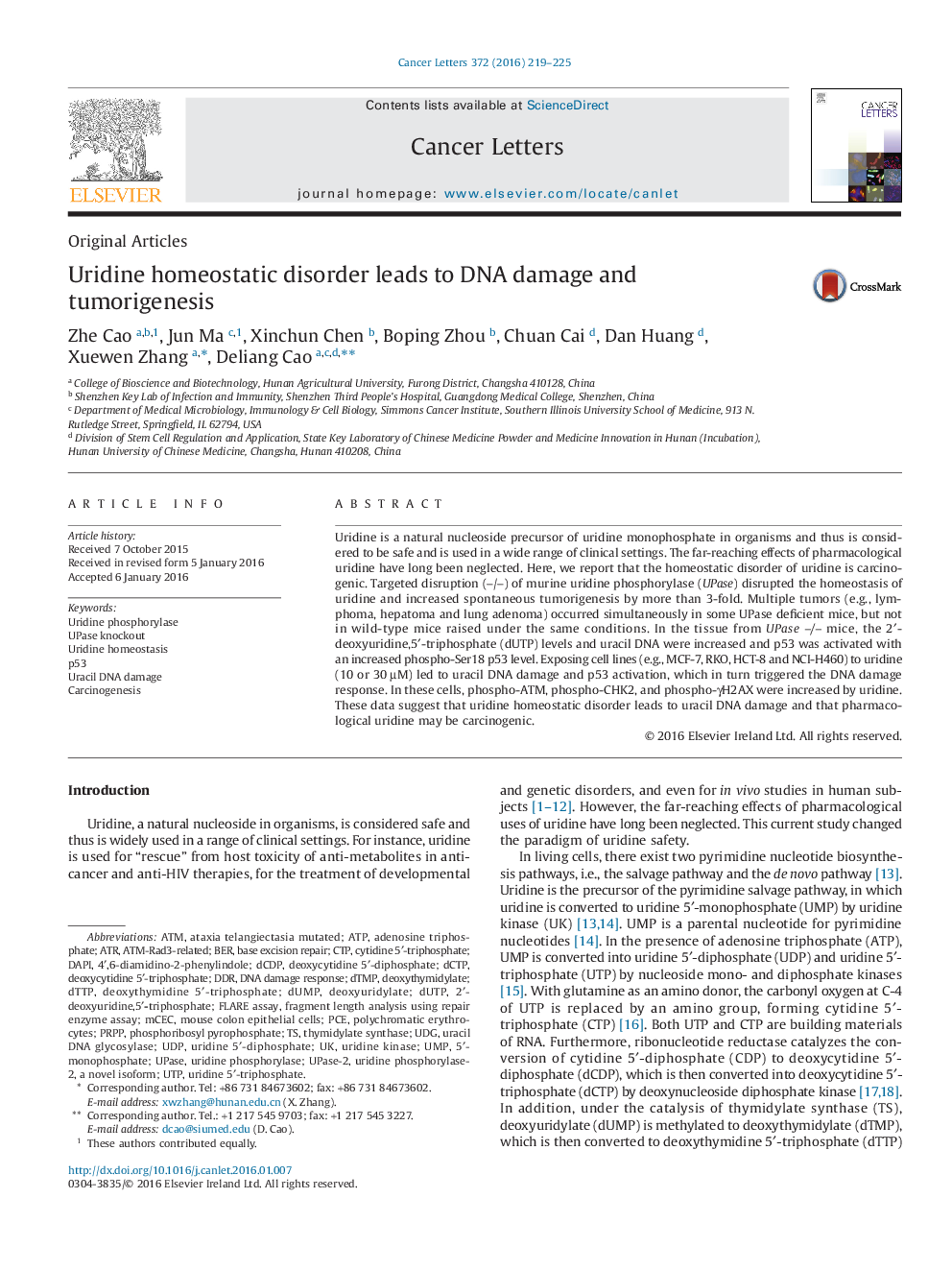| Article ID | Journal | Published Year | Pages | File Type |
|---|---|---|---|---|
| 2112397 | Cancer Letters | 2016 | 7 Pages |
•Uridine homeostatic disorder induced by uridine phosphorylase knockout leads to DNA damage and spontaneous tumorigenesis.•Addition of uridine into culture medium causes uracil DNA damage and p53-mediated DNA damage response (DDR).•Pharmacological use of uridine may be carcinogenic, and the far-reaching effects need to be considered.
Uridine is a natural nucleoside precursor of uridine monophosphate in organisms and thus is considered to be safe and is used in a wide range of clinical settings. The far-reaching effects of pharmacological uridine have long been neglected. Here, we report that the homeostatic disorder of uridine is carcinogenic. Targeted disruption (−/−) of murine uridine phosphorylase (UPase) disrupted the homeostasis of uridine and increased spontaneous tumorigenesis by more than 3-fold. Multiple tumors (e.g., lymphoma, hepatoma and lung adenoma) occurred simultaneously in some UPase deficient mice, but not in wild-type mice raised under the same conditions. In the tissue from UPase −/− mice, the 2′-deoxyuridine,5′-triphosphate (dUTP) levels and uracil DNA were increased and p53 was activated with an increased phospho-Ser18 p53 level. Exposing cell lines (e.g., MCF-7, RKO, HCT-8 and NCI-H460) to uridine (10 or 30 µM) led to uracil DNA damage and p53 activation, which in turn triggered the DNA damage response. In these cells, phospho-ATM, phospho-CHK2, and phospho-γH2AX were increased by uridine. These data suggest that uridine homeostatic disorder leads to uracil DNA damage and that pharmacological uridine may be carcinogenic.
